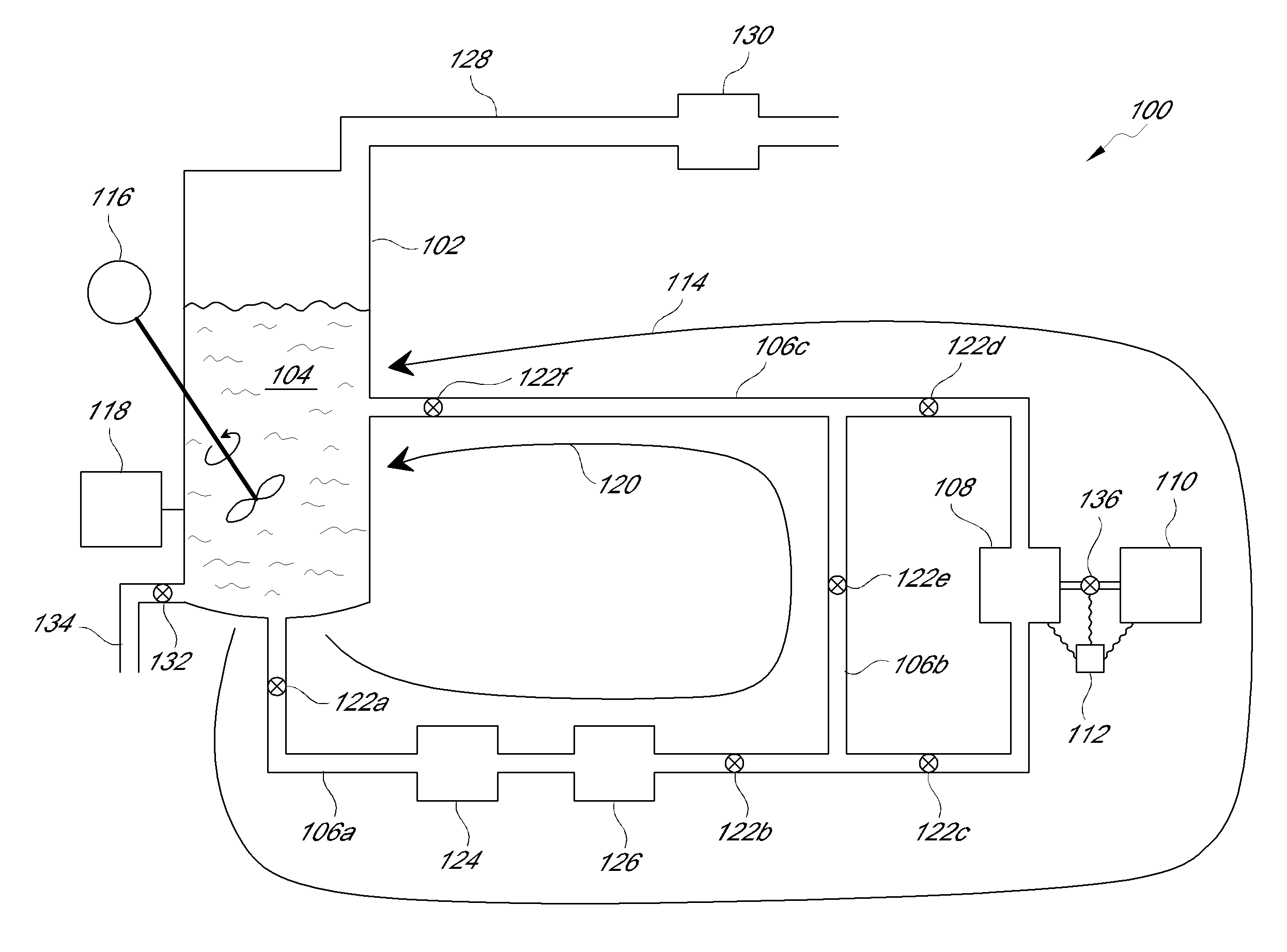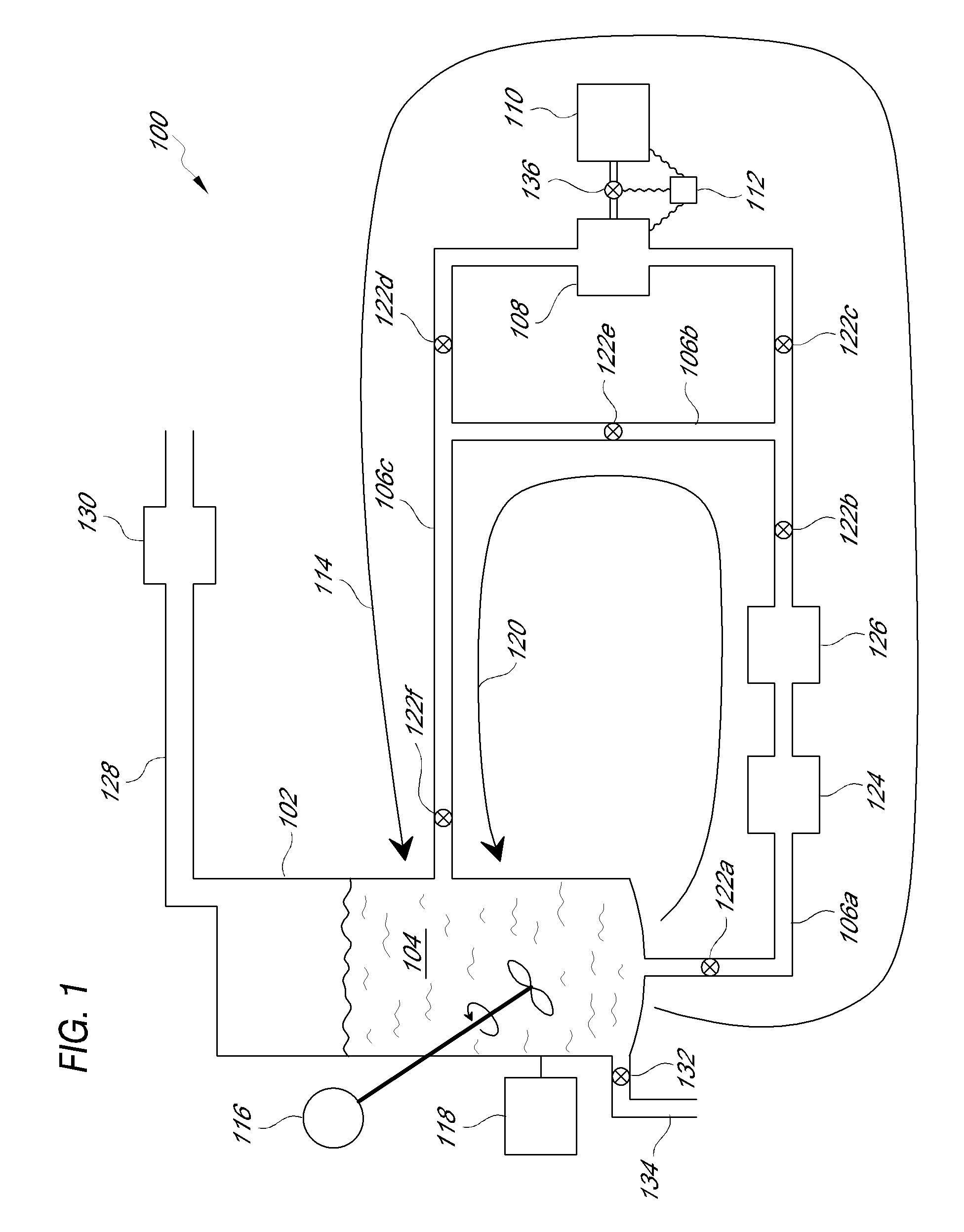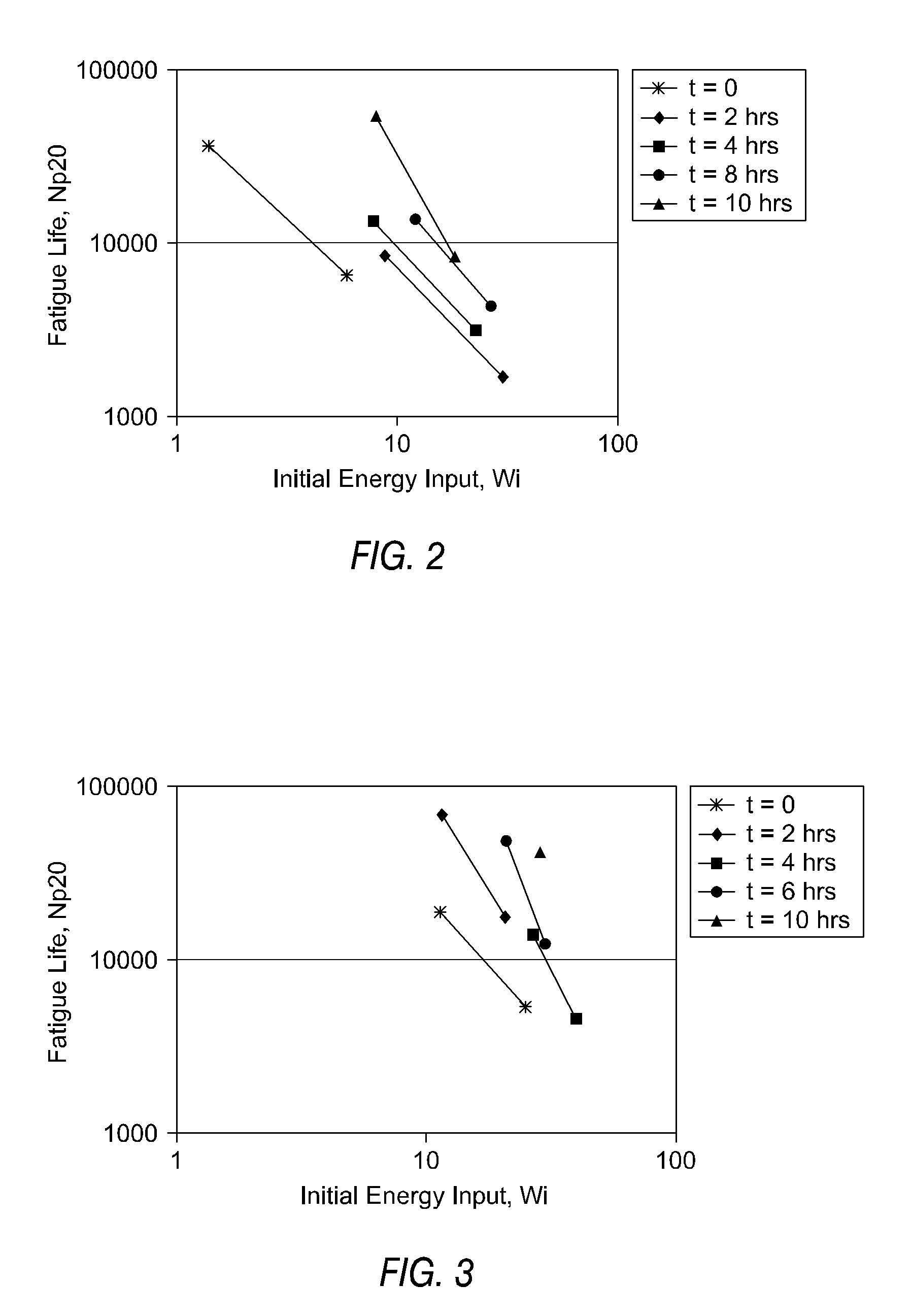Methods and systems for manufacturing modified asphalts
a technology of modified asphalt and manufacturing methods, applied in the direction of chemical/physical processes, building components, process and machine control, etc., can solve the problems of large amount of power drawn by the in-line mixer, inability to accurately measure the impact of asphalt, etc., to achieve high viscosity of asphalt, reduce the effect of affecting the effect of agitation and high efficiency
- Summary
- Abstract
- Description
- Claims
- Application Information
AI Technical Summary
Benefits of technology
Problems solved by technology
Method used
Image
Examples
example 1
[0052]A batch of Valero PG 58-22 asphalt was obtained commercially and modified in accordance with the following procedure. The asphalt was subjected to a standard preliminary procedure known as the rolling thin film oven (“RTFO”) procedure, which is well known in the art. The RTFO procedure simulates the conditions under which asphalt is processed in a hot-mix plant.
[0053]Twelve tons of the base asphalt (Valero PG 58-22 after application of RTFO procedure) was loaded into the container 102 at a loading temperature in the range of about 300° F. to about 350° F. Circulation of the base asphalt through the heated flow line 106b in the bypass loop 120 began as the material was heated to a temperature in the range of about 380° F. to about 400° F. Once heated, high shear agitation of the base asphalt was initiated by opening the valves 122d and 136, partly opening the valve 122c and allowing the base asphalt to flow through the in-line mixer 108. A portion of the base asphalt in the byp...
example 2
[0057]A batch of Valero PG 58-22 asphalt was obtained commercially and modified in accordance with the procedure described in Example 1. However, this batch of asphalt was subjected to a different preliminary procedure known as the pressure aging vessel (“PAV”) procedure, which is well known in the art. The PAV procedure simulates field aging. As in Example 1, samples were taken at various modification times, although the sample taken after 10 hours of modification was only tested at one stress level. As shown in FIG. 3, the fatigue life of the samples is improved upon modification of the asphalt as described herein. The fatigue resistance is improved in terms of both the life duration of the material (as indicated by increased values of Np20) and the amount of energy (as indicated by increased values of Wi) that it can absorb.
example 3
[0058]A batch of AR-8000 asphalt was obtained commercially from San Joaquin Refining and modified in accordance with the procedure described in Example 1, with the exception that no preliminary RTFO procedure was applied.
[0059]Samples were removed after 0 hours (starting material), 2.25 hours, 5.25 hours, 6.25 hours, 7.75 hours, and 8.5 hours, respectively. The modified asphalts were tested for rutting resistance following the MSCR procedure by applying a load for 1 second and removing it for 9 seconds. The loading sequence was applied for 10 cycles at 100 Pa followed by 10 cycles at 3200 Pa. FIGS. 4 and 5 show the non-recoverable creep compliance (Jnr) for the 100 Pa test and the 3200 Pa test, respectively. Data points were taken at about 64° C. and at about 70° C. for each sample. As seen in FIG. 4 and FIG. 5, the Jnr values steadily decreased with increased processing times, indicating increased stiffness and greater rutting resistance. The margin of improvement is significant an...
PUM
| Property | Measurement | Unit |
|---|---|---|
| Temperature | aaaaa | aaaaa |
| Temperature | aaaaa | aaaaa |
| Temperature | aaaaa | aaaaa |
Abstract
Description
Claims
Application Information
 Login to View More
Login to View More - R&D
- Intellectual Property
- Life Sciences
- Materials
- Tech Scout
- Unparalleled Data Quality
- Higher Quality Content
- 60% Fewer Hallucinations
Browse by: Latest US Patents, China's latest patents, Technical Efficacy Thesaurus, Application Domain, Technology Topic, Popular Technical Reports.
© 2025 PatSnap. All rights reserved.Legal|Privacy policy|Modern Slavery Act Transparency Statement|Sitemap|About US| Contact US: help@patsnap.com



